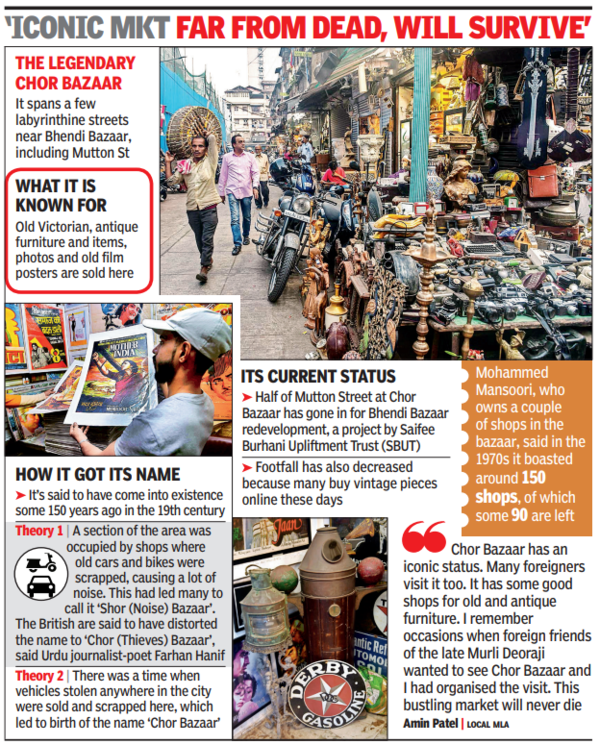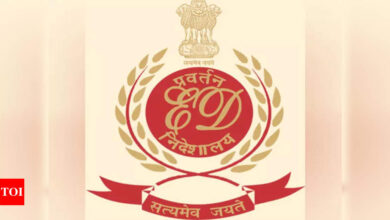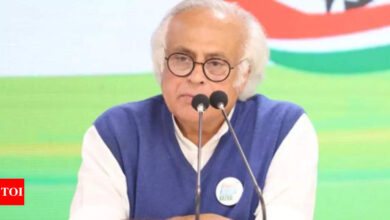Fast-shrinking Chor Bazaar fights to keep edge in e-age | India News

[ad_1]
And it is essentially vintage quality of the merchandise available at Chor Bazaar- spanning a few dusty labyrinthine streets near Bhendi Bazaar in South Mumbai-that has earned the neighbourhood its fame. However, some famous streets at Chor Bazaar are complete a misnomer. Like Mutton Street and Chimna Butcher Street. Though originally home to many qasais (butchers), there is no mutton shop or slaughterhouse here.
“They still have a community hall there,” says Haji Hasan Rahimo (74), pointing to a fading signboard of Bombay Bakar Qasab Jamaat Khana.
If Mutton Street was once the heart of Chor Bazaar, only half of it remains today, the other half getting gobbled up in the Saifee Burhani Upliftment Trust (SBUT), the massive redevelopment project of Bhendi Bazaar. A brainchild of the leader of the Dawoodi Bohras, the late Syedna Mohammed Burhanuddin, to decongest Bhendi Bazaar and give cleaner, bigger and better homes to the residents, SBUT is transforming the locality.
Though only half of Mutton Street, part of Chor Bazaar, has gone into redevelopment, a rumour, say many shop owners, has been spread that Chor Bazaar is dead. “Many customers wrongly believe there is no Chor Bazaar left. Chor Bazaar is here to stay,” says Mohammed Salim who inherited Haji Ebrahim Record Shop from his uncle in the 1960s.
Once, recalls Salim, legendary musicians such as O P Nayyar, C Ramchandra and Sajjad Hussain visited Chor Bazaar, including his shop, looking for old music records. “Today, many hunt and shop for rare records and record players online,” says Salim. But does the Chor Bazaar have a future? “It will survive as long as people have a taste for antique pieces,” he adds.
But how did the area get its name Chor Bazaar, literally “Thieves’ Market”? There are many theories. Senior Urdu journalist-poet Farhan Hanif grew up a few lanes from Chor Bazaar. He says a section of the area is occupied by scrap units. “The breaking of vehicles creates shor or noise. Initially it was called Shor Bazaar which the British distorted to Chor,” says Hanif. He also agrees many stolen cars and bikes ended up being sold and scrapped here. “Nobody sells ‘chori ka samaan’ (stolen things),” says Salim.
Stolen or not, merchandise at this chaotic, bustling bazaar has attracted many. Author and columnist Shobhaa De says, “I have been a Chor Bazaar veteran for 45 long years. I knew every gully and shop, was friends with shop owners like Ahmed Ali, Iqbal Bhai, Mehmood, Riazuddin and others. Their passion, their knowledge and understanding of old furniture and rare objects was staggering.”

Among the attractions at Chor Bazaar are a few shops selling posters of old Hindi films. Two shops-Poster Stuff and Habib and Sons-owned by the “Khan family” still survive. Habib Khan was a passionate collector of film posters. His great great grandson Kaleem Khan says Habib Khan founded this shop in 1872.
Among the buyers of these hand-crafted memorabilia are “restaurant and hotel owners who want to give an old-world Bollywood look to their establishments. Then there are film and ad directors who need these posters as background to scenes from the past. They buy or take these on rent,” says Khan, showing original posters of iconic films such as Mughal-e-Azam and Awaara. “The older the poster, the costlier it is,” adds Khan. “We have posters priced between Rs 300 and Rs 3 lakh (like Mughal-e-Azam’s)”.
Actors and singers do come here even today though not as frequently as they would till the 1970s. Khan’s brother Tughlaq Umar Khan remembers actor Vidya Balan visiting his poster shop in a burqa a few years ago. At the poster shop was Sidhivin Krishnan, an art collector from Bengaluru. “I am here for the first time, looking for something weird and rare,” he says. Meanwhile, Salim plays on the gramophone ‘Aane wala ayega (the one who wishes to come will come)’, that haunting song by Lata Mangeshkar from Mahal (1949). Perhaps this also exemplifies the signature tune of Chor Bazaar where footfalls have lessened even if the name evokes memories of roaming the busy, buzzy streets, looking for things many may dismiss as “anachronistic”.
#Fastshrinking #Chor #Bazaar #fights #edge #eage #India #News





